What Hi-Fi? Verdict
A decent pair of budget in-ears with built-in Alexa or Google Assistant, but if you prioritise great sound over such extras, there are better options for your money
Pros
- +
Voice assistant access
- +
Practical build
Cons
- -
Bright and aggressive treble
- -
Lack bass definition
Why you can trust What Hi-Fi?
Any new JBL true wireless headphone offering has some big shoes to fill. At first glance, JBL’s newest pair of boxed buds, the Live 300TWS, seem to have covered every previous base and added a few extra flourishes for 2020.
Gone are the flashy cases and teal colours previously seen from the brand – they come in black, white and navy, with a kind of taupe colour in the works – this is an altogether more functional and durable aesthetic from JBL. The biggest addition is that both Alexa and Google Assistant are now built-in, and the US brand has also priced the true wireless headphones at a competitive £130 ($150).
So far, so good, but let’s see how the JBL Live TWS300 performs for operation, comfort and sound.
Comfort
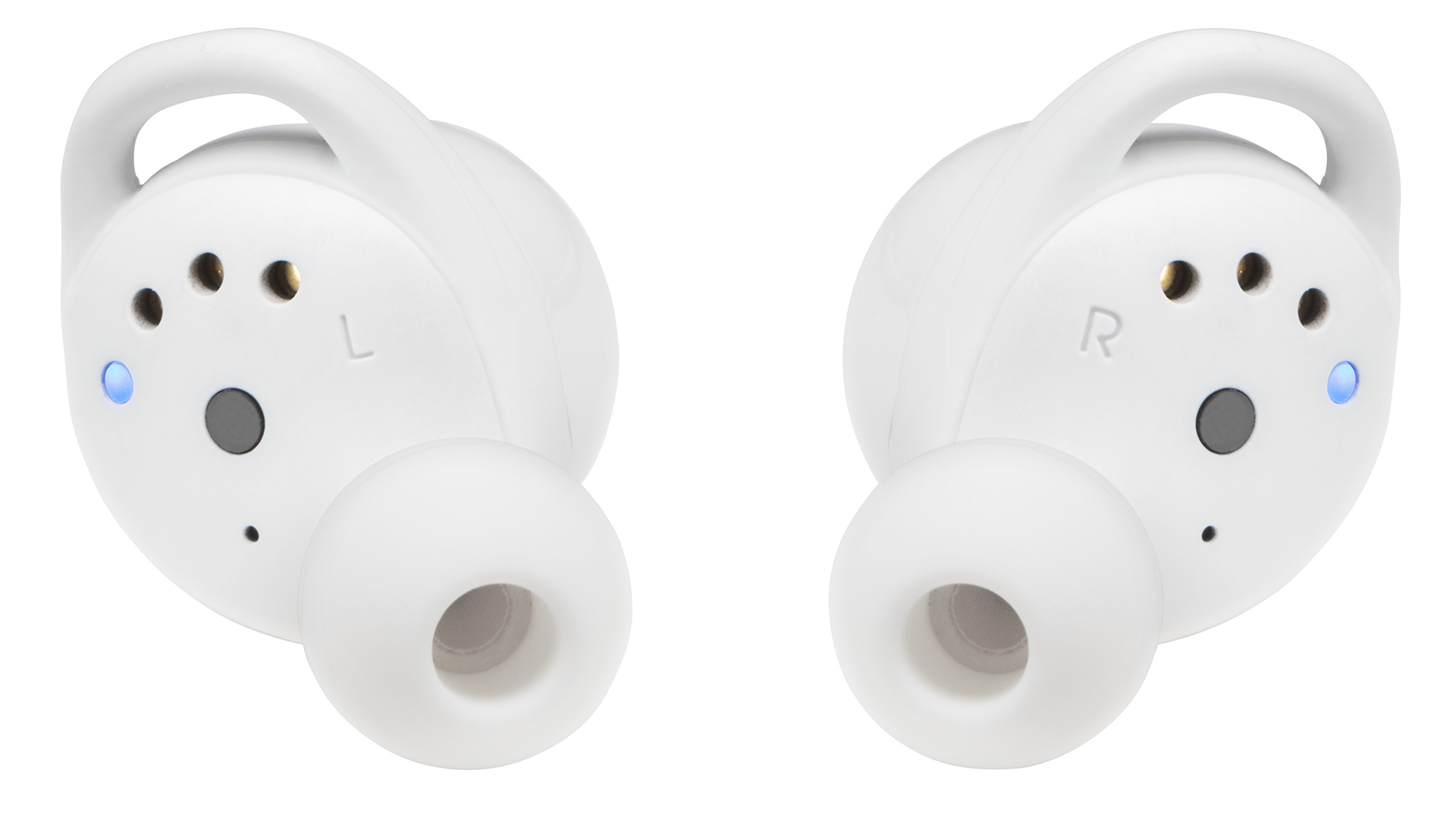
The Live 300TWS buds come with three additional tips and four extra fins. Some rivals come with more, but because JBL has absolutely nailed the shape and weight of the earpieces themselves, you're unlikely to struggle to find a snug fit. We manage to find a perfect seal with the pre-fitted set.
The case is smooth, durable and feels just like a travel-sized bar of soap. It's easy to slip into your bag or pocket and makes for a far superior case compared to JBL's previous effort, the JBL Reflect Flow. A nice new touch here is that when the buds are placed back in their nest, a halo of white light pulsates around the USB-C port on the underside of the case for easy location when connecting to a power source. When charging, it glows red.
The units themselves house the same 5.8mm drivers as their older sibling and while the branded circular housing is somewhat reminiscent of the earlier Reflect Flow model, the design of the buds feels more streamlined and teardrop-shaped, thanks to the perfectly-angled neck. Every update in terms of aesthetics is well thought out and makes for a better product overall.
Build
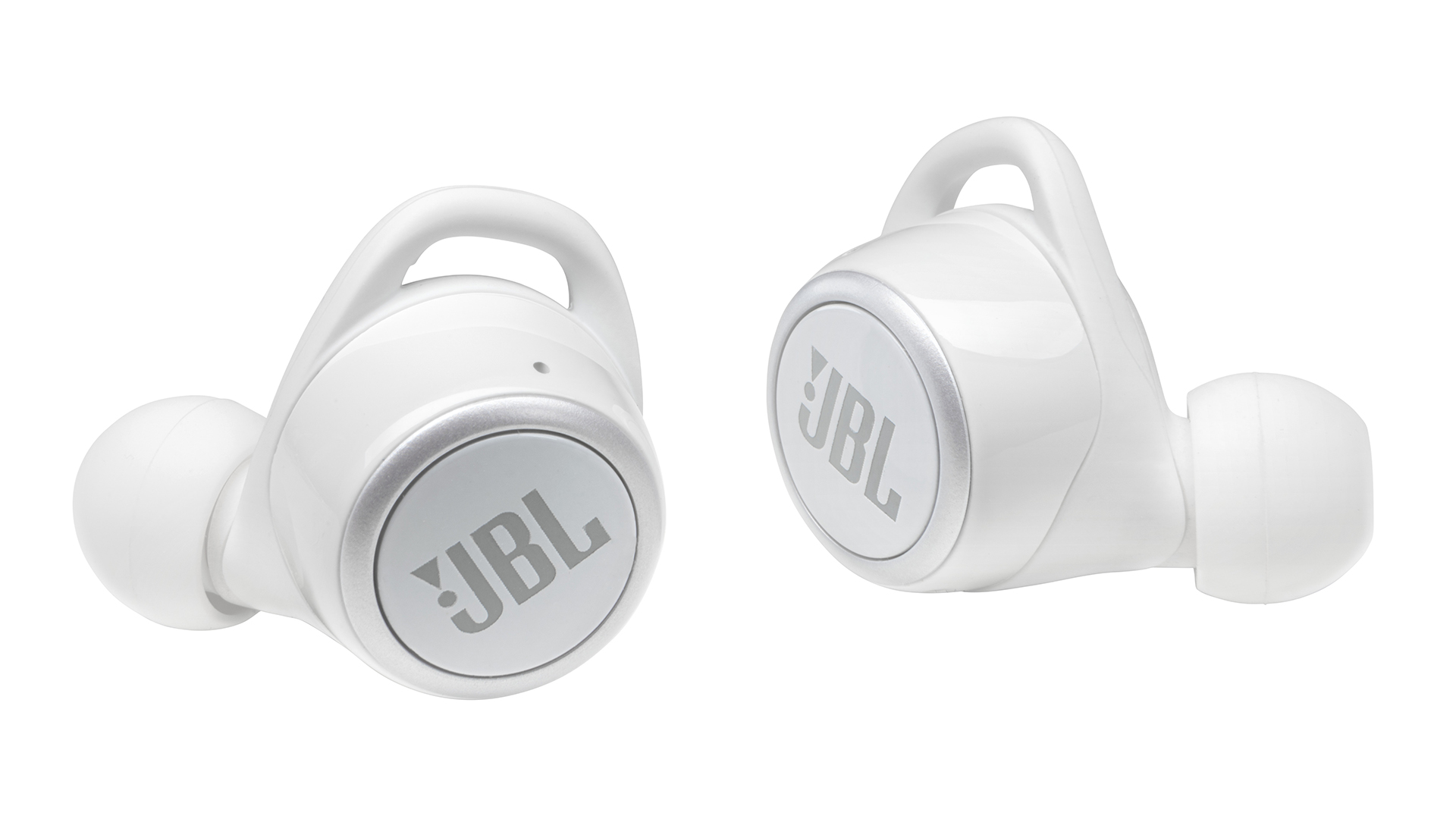
The big draw here is the addition of Alexa and Google Assistant. You will need to use the free JBL Headphones app, which is well designed. As well as helping with Alexa/Google Assistant access, it also offers customisable EQ profiles and the option of deciding what swiping forwards and back from each bud’s centre actually does.
We play with the option of altering the volume using the right bud, but because you don’t actually depress the button on the earpiece, it’s hard to know if you’re pressing correctly. Ultimately, we find it too fiddly to use, which means we’d still prefer to root around in our bag for our phone.
In terms of voice assistant access, Siri (accessed by long-covering the right bud) works well. Pressing the right bud quickly for play/pause, two taps for skipping forward a track or three for skipping back also works, albeit with practice.
Alexa, accessed via one touch of the left bud (after set-up in both the JBL Headphones app and the Alexa app), is a challenge initially. We perform a reboot, pair manually and then update the firmware. In each case, the Alexa app recognises the Live TWS300 in-ears but displays them as ‘offline’ on our Alexa iOS app.
After a few tries, we finally manage to achieve a hook-up. Once working, it’s a pretty neat feature: we press the left bud once and say “Play Coheed and Cambria” and a curated playlist from Amazon Music is delivered to our ears.
We have a far easier time with Google Assistant, which is up and assisting long before Alexa joins the party. When chosen and paired (you have to select either Alexa or Google in the JBL Headphones app, you can’t have both helping simultaneously) Google happily answers our questions about Bake Off and the UK singles charts as we tap the left bud.
Google Assistant simply lowers the volume of playback, tells us what we need to know, then backs off and leaves us to our music.
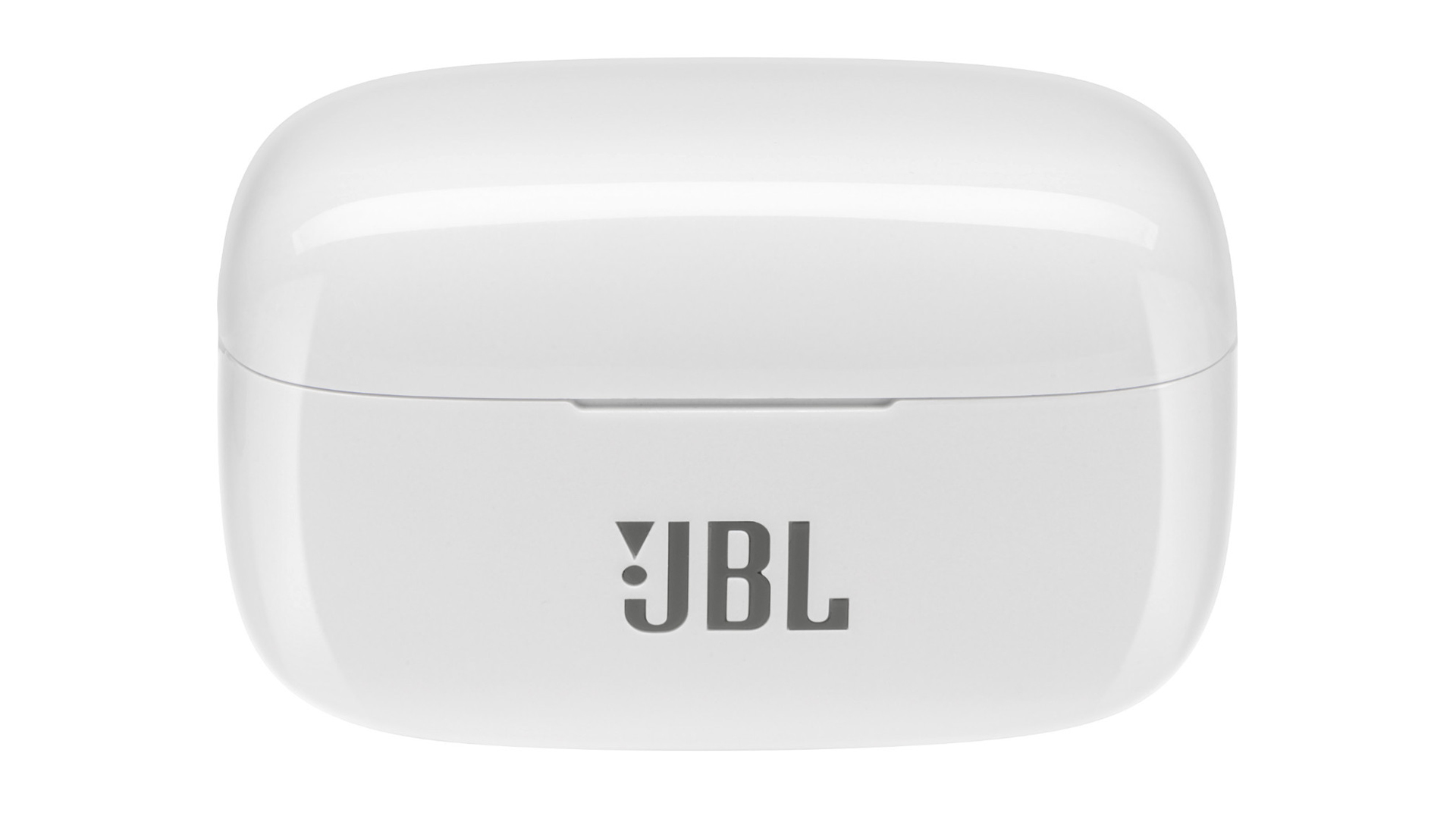
JBL’s preset sound profiles, including Talkthru (low volume) and Ambient Aware (slightly higher), are fine but rather hit-and-miss to access via a swipe forward on the left bud. It renders these functions a little pointless if the best way of deploying them is to search for your phone. The moment for using them, someone calling your name in the office, for example, will simply have passed.
It should also be noted that while these two options differ slightly, they’re essentially volume presets; they don’t actively cancel noise or feed external sounds into the headphones.
The JBL Live 300TWS is not pitched as a sports in-ear, but it’s still a little disappointing to see an IPX5 rather than IPX7 rating. You’re unlikely to be submerging these headphones in water for 30 minutes, but the previous model carried the fully-waterproof certification rather than a sweat/splash-proof rating, meaning you needn’t worry about accidentally dropping them in a puddle.
The battery life is also slightly underwhelming, at a claimed six hours from the buds (compared to 10 hours from the Reflect Flows) plus 14 hours for the case. You get a maximum 20 hours in total before needing a power source, but thanks to the USB-C charger, when you do juice up you can get a one-hour boost in just 10 minutes.
While the headphones carry the Bluetooth 5.0 spec, they don't have aptX. That's a slight shame but not a huge surprise at this price, and the wireless connection never falters during testing. Hands-free calls using the buds’ built-in mics are also clear.
Sound
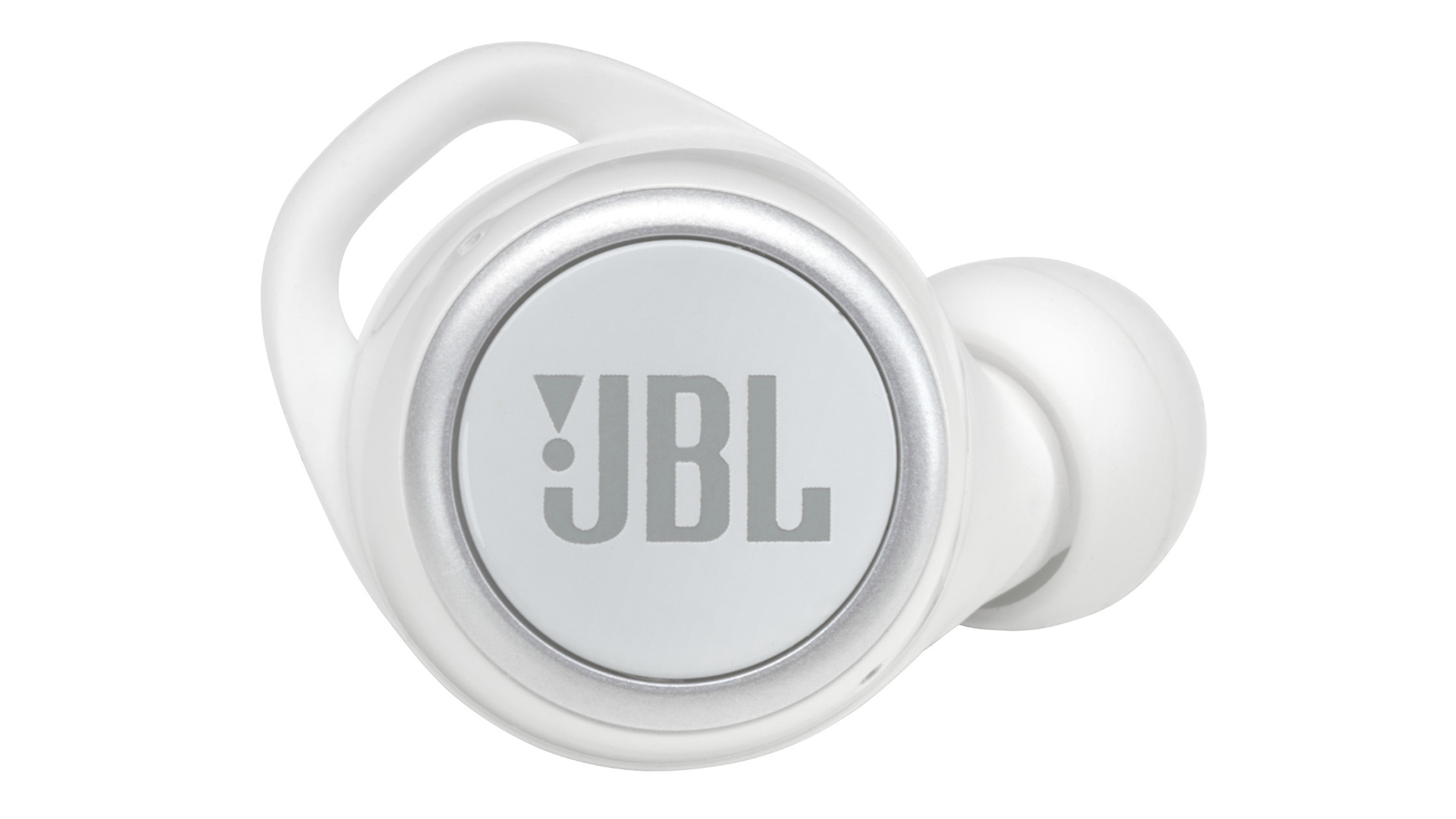
We cue up Eric Guy’s 2019 album Egotrip on Tidal, and the gentle high hat patter and pensive saxophone at the beginning of Across The Channel is presented with a fair amount of space around each instrument.
However, we’re also hearing a good shade off ideal levels of bass depth and immersion – it’s as if we’re being placed a little further away from Guy’s bass guitar than we ought to be. As the track builds, we hear a treble-focused mix, and one that isn’t an error on the part of the recording.
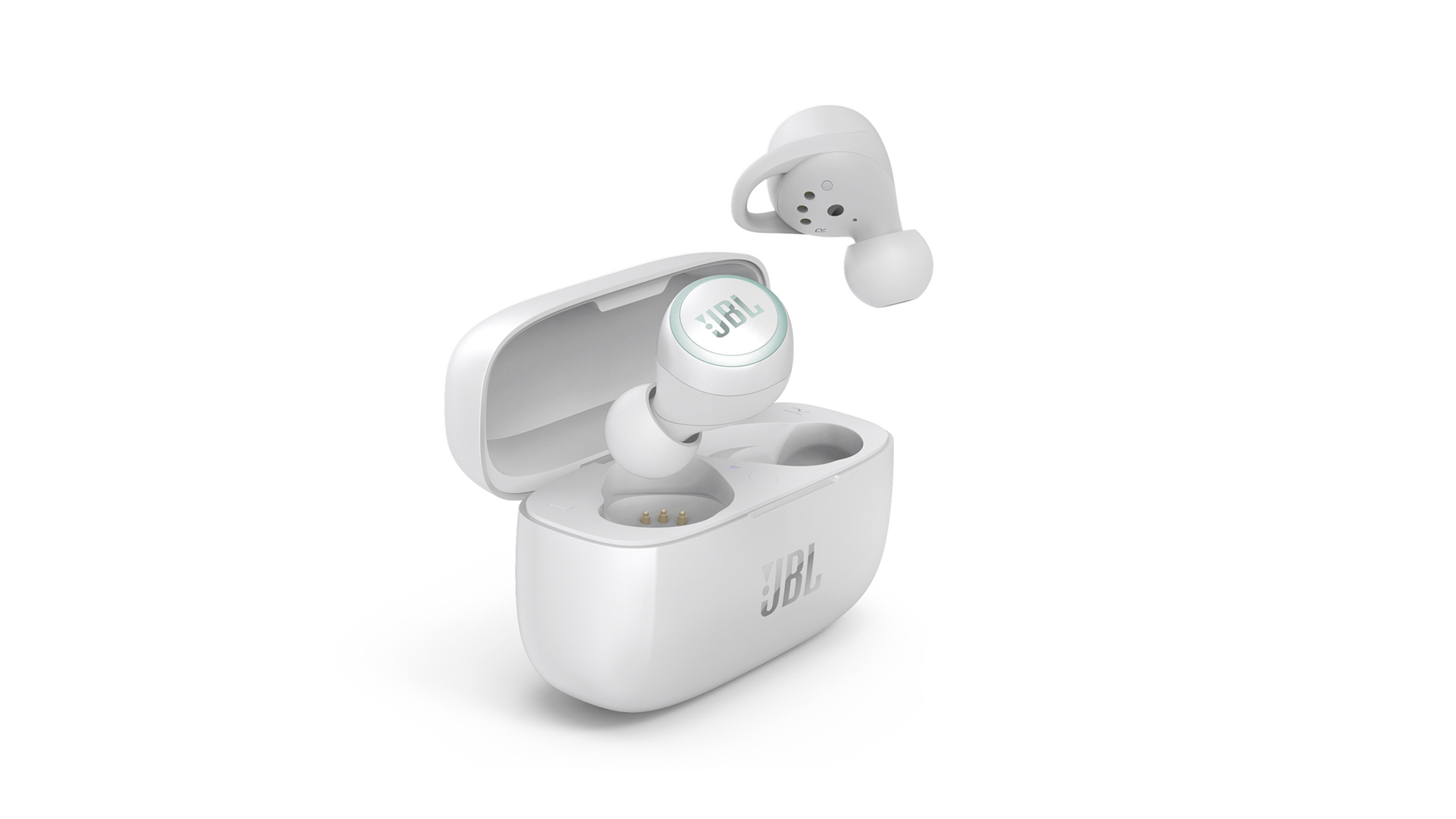
Alexa Yes
Google Assistant Yes
Built-in mic Yes
Bluetooth version 5.0
Impedance 16 ohms
Charging time 2hrs (from empty)
Battery life 6 hours (+14hrs from case)
Weight 65.7g
Sound effects at the end of the track, which should be spine-tingling, don’t resonate as fully or with as much transparency as they do from our comparison pair of headphones, the Award-winning Cambridge Audio Melomania 1s. While the different strands come together well, we need more bass snap to get texture and to distinguish them fully.
The album continues to Movin On and, while the Wurlitzer at the top of the track is energetically handled, it comes at the expense of the heavy bass riffs, which register less as a result of the treble-heavy balance.
We switch to FKA Twigs’ Holy Terrain and the initial street sounds come through with pleasing separation – there's the distant car horn in our left ear and the more centrally placed backbeat – but these should resonate with more weight overall. We also glean more texture and emotion in Twigs’ varied vocal stylings from the Melomania 1s.
Play Mogwai’s 2018 album, Kin, and it’s a similar story. The keys in Eli’s Theme are well handled through the midrange, but as we increase volume in search of bass, the treble overstates its presence. We lose much of the intentional darker, juicier foreboding reverb surrounding the keys.
Verdict
The JBL Live 300TWS's shortfall in sound quality, especially in terms of bass weight, makes an otherwise good design difficult to recommend for those wanting a great-sounding set of in-ears at this level.
That said, the design is promising, and if having Alexa pick your tunes has always been your heart’s burning desire, they’re still worthy of a second look for the money.
SCORES
- Sound 3
- Comfort 4
- Build 4
MORE:
Read our Cambridge Audio Melomania 1 review
Read our JBL Reflect Flow review
What Hi-Fi?, founded in 1976, is the world's leading independent guide to buying and owning hi-fi and home entertainment products. Our comprehensive tests help you buy the very best for your money, with our advice sections giving you step-by-step information on how to get even more from your music and movies. Everything is tested by our dedicated team of in-house reviewers in our custom-built test rooms in London, Reading and Bath. Our coveted five-star rating and Awards are recognised all over the world as the ultimate seal of approval, so you can buy with absolute confidence.
-
xenosonic Quite possibly the worst things ever made!Reply
They sound good, but everything under the sun sets these off. A drop of sweat, a drop of rain, a slight breeze past your year and one of more of the gestures are triggered, but when you actually want to use a gesture, nothing!. Your constantly interrupted by Bixby (also the the worst thing ever made, yes I know that's 2 worst things). There is no way to turn the gestures off. These are completely useless!

